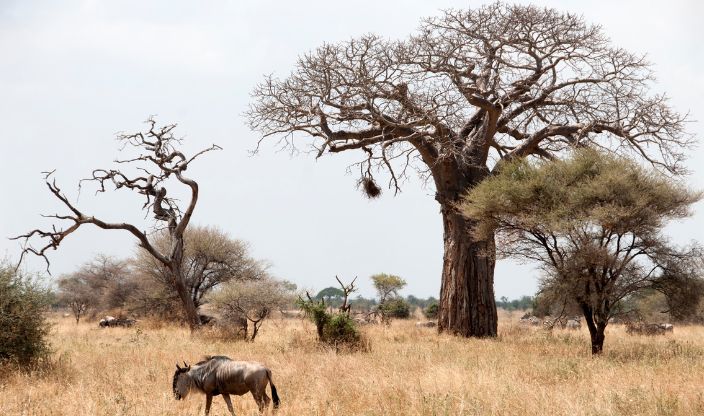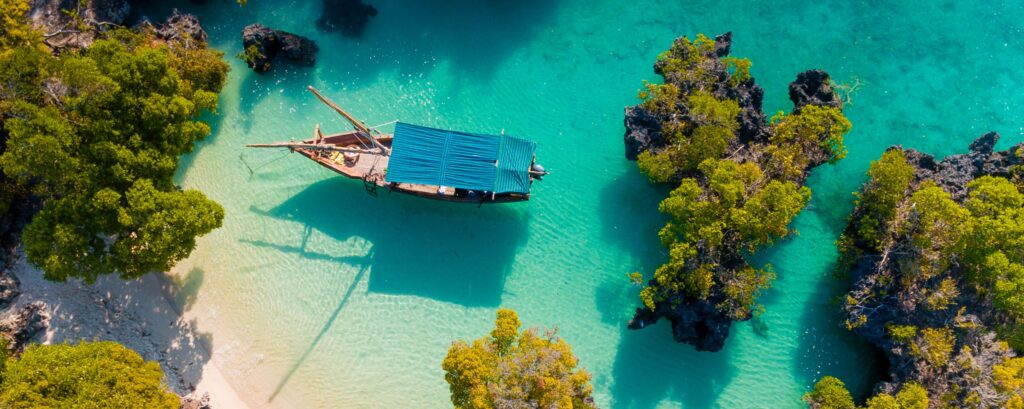Introducing Tanzania
Tanzania is an East African nation that is located very close to the Equator. Tanzania became a sovereign state in 1964 after Tanganyika and Zanzibar, which were formerly distinct republics, were united. Tanzania’s mainland portion is bordered to the north by Uganda, Lake Victoria, and Kenya, to the east by the Indian Ocean, to the south and southwest by Mozambique, Lake Nyasa, Malawi, and Zambia, and to the west by Lake Tanganyika, Burundi, and Rwanda.
Tanzania has a tropical climate with regional and altitude variations. The low-lying parks are dryer and cooler than the coast, which is typically hot and muggy. The Great Wildebeest Migration and the dry season, which lasts from July to October, are the two greatest periods to visit Tanzania. This time is also ideal for safaris, hiking and beach breaks in Zanzibar.
Tanzanian food is incredibly diverse. Spices like ginger, cinnamon, cloves, and coconut milk are frequently utilised in meals, and spicy foods are widely available.
Okra, spinach, beans, and cassava leaves are typical vegetables, while rice and ugali are primary foods. Tanzania is reported to have at least seventeen plantain types. They are frequently fried into chips or used to make different soups and stews. Tanzanian cuisine has been greatly affected by Indian cuisine as a result of the Indian diaspora. In Tanzania, especially in Dar es Salaam, you can find many Indian-owned restaurants serving up staples like chapati and samosas. When in Tanzania do try Wali Wa Nazi, one of their key rice dishes made with coconut milk and water and served alongside curry dishes, as well as Ugali, their national dish, maize, followed by cassava,sorghum, and then millet and is a soft dough type bread.
The Rift Valley in Tanzania is home to the earliest habitation in Africa and the fossilised bones of the hominid family. In the first millennium, the Bantu people migrated from the north and west, and in the 700s AD, the Arabs founded Kilwa (south of Dar es Salaam). Along with the Persians, the Arabs also colonised Zanzibar, which together with East Africa would eventually give rise to Swahili culture in the 1200s.
Vasco da Gama led the Portuguese when they joined the scene in the late 1500s and established control of the Tanzanian coast, with Zanzibar becoming into a major centre for the slave trade in the 1600s and 1700s. The oldest structure in the area is the Old Fort in Stone Town, which dates from this time period. German East Africa was founded in 1891, and after ruling over a number of neighbouring nations, it was given to Britain after World War I. Abolishing the slave trade in Zanzibar, they gave it the name Tanganyika. The United Republic of Tanzania was founded in 1963 after Zanzibar and Tanganyika joined after gaining their respective freedom. The Wanyambo Festival in Dar es Salaam and the Mwaka Kogwa Festival in Zanzibar are just two of the key festivals that take place throughout the year in Tanzania and feature traditional dress and dancing. Periodic film and art events are also held, and marketplaces across the country sell unusual items.
Swahili, an Arab/African hybrid, is the predominant culture in Tanzania, but there are sizable Asian populations, mainly Indians, in towns and cities. Rural areas are inhabited by tribes, such as the Maasai of the northern Great Rift Valley.
Tanzania is a great destination to take children over the age of 7. As the time difference is only 3 hours, you can rest assured that the time difference will not cause any jet lagged children or teens. As a destination it offers amazing experiences to explore the Big 5 on an exciting safari, snorkel or dive in the Indian Ocean or have some beach fun in Zanzibar. Some key attractions to enjoy with the children include visiting the Serengeti to witness the Great Migration of the big cats, as well as the Ngorongoro Crater for jaw dropping vistas at the crater rim and impressive history.
Recommended Tanzania Specialists
Top Locations in Tanzania









